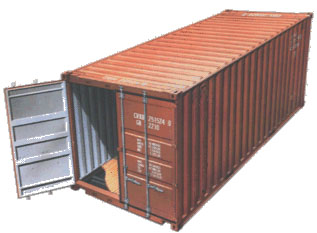Closeouts From Overseas Salvage Containers Are A Golden Opportunity.

Supply-chain disruptions have caused a surplus of abandoned shipping containers and created an opportunity for new buyers to cash in on its contents. Abandoned cargo can be publicly auctioned off or sold directly to cargo salvage buyers. For these buyers, it's a guessing game of what may be inside any of these containers. Companies that liquidate inventory are accustomed to some surprises, but closeout merchandise is often purchased from U.S.based distributors who know exactly what they are selling. When a business has excess inventory on the books they have a good idea what is in the warehouse. When it comes to buying abandoned shipping containers, it can be anything from a container full of Amazon liquidation products that arrived too late for Christmas, to a mixed load of food, to a car filled with personal possessions. But for the right buyers, it can present opportunity.
The director of JS Cargo & Freight Disposal, Jake Slinn,told Bloomberg it's a guessing game. A buyer is presented with a manifest, but they often don't truly know what's inside until they crack open the container. As a part of a two-man business based out of the UK, Slinn told the publication he's taken containers full of anything from aluminum take-out pans to electric scooters, breast implants, pumpkin seeds or six tons of cheese. "It's like 'Storage Wars,'" Slinn told Bloomberg, referencing the American reality-TV show. "You crack the doors open and it's something completely different than we were expecting. So it's a challenge. You're thinking, 'Right, where can I send this? What can I do with this?'" This is much different that the https://merchandiseusa.com/our-story.php.
When closeout merchandise is identified, the company often knows exactly what merchandise they want to get rid of. They contact excess inventory buyers who are capable of buying large inventory liquidations. These outfits liquidate inventory of all kinds including closeouts of toys, overstock housewares and home goods,and even amazon liquidation products from failed ecommerce businesses.
Buying salvage shipping containers is a different story. Sometimes when a customer has shipped a container of belongings abroad, changes in circumstances can prevent them from collecting or successfully forwarding their load. The same sometimes happens with commercial clients shipping single items in bulk. Rent and demurrage charges mount up after a certain grace period, and sometimes it makes more financial sense to cut one’s losses and abandon the container altogether rather than pay the hefty fees to have it released. Likewise, if certain goods in a container carry unforeseen or unpaid duties and taxes that the owner cannot pay, they will eventually be taken by customs and sent to the warehouse to be disposed of or sold to the highest salvage bidder.
Closeout websites and wholesale liquidators have gained popularity over the past few years as consumer demand has increased. Excess inventory buyers have also been busy with so much product arriving too late for retailers and ecommerce companies. Many FBA sellers have been forced to have an Amazon liquidation of their products due to high storage fees and competition from closeout websites, liquidation
companies and other sellers. Even more are shutting down 3PL's and want to liquidate inventory and get rid of any overstock merchandise to free up warehouse space.
There are bargain hunters and deal junkies everywhere looking for Amazon liquidation deals, closeout merchandise and liquidation deals. Many buyers will take merchandise in bulk and others prefer to know exactly what they are getting. But excess inventory problems are not going away anytime soon so there will always be 3PL warehouses shutting down and salvage shipping containers available.
In addition to closeout brokers buying excess inventory from abandoned containers and importers getting rid of too much inventory, there are also containers that literally fall into the ocean. The World Shipping Council’s 2020 report estimates that an average of 1,382 containers are lost at sea each year. The figure is based on a survey of the WSC members that represent 80% of the global vessel container capacity. The WSC assumed for the purpose of the analysis that the container losses for the 20% of the industry’s capacity that is operated by carriers that did not participate in the survey would be roughly equivalent to the losses reported by the responding carriers representing 80% of the industry’s capacity. The report, however, was issued before the One Apus stack collapse in December 2020 that resulted in the loss of more than 1,800 containers in the Pacific Ocean.
These are truly salvage opportunities and often go through insurance companies. This is completely different from closeout brokers who liquidate inventory of companies going out of business, making room for new products in the warehouse, or shutting down 3PL warehouses. Merchandise USA has been buying wholesale liquidations since 1984. We specialize in helping businesses interested in downsizing warehouses or shutting down 3PLs. Old inventory sitting in a warehouse accumulating dust is costing money everyday. Liquidating old stock is the cheapest way to free up warehouse space and cash.



